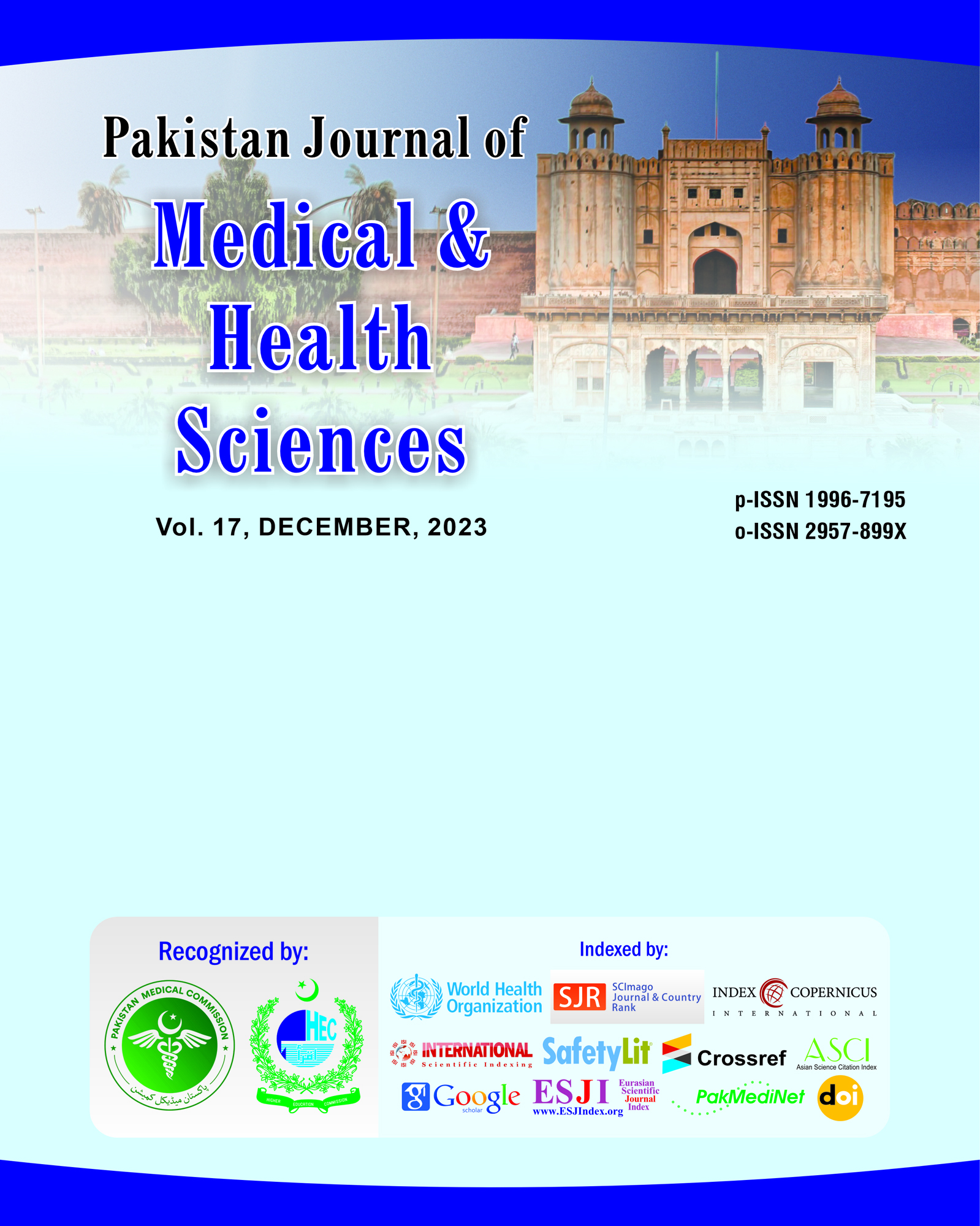Quality of Life of Children with Cochlear Implant: A Parental Perspective
DOI:
https://doi.org/10.53350/pjmhs020231712175Abstract
Background: Cochlear implant for hearing implant children can have a variety of impact factors on the biographies of participants as well as their families.
Objective: To find the improvement in hearing impaired children after cochlear implantation.
Study Design: Descriptive observational study
Place and Duration of Study: Audiology Center, Dr. Nadeem Mukhtar’s Clinic, Lahore from 1st July 2015 to 31st December 2015.
Methodology: Forty seven children aged between 2 to 5 years at the time of implantation and the current age is 4 to 16 years. The parental stance was evaluated using a self-designed questionnaire which was delivered to families and had the subsequent sections: communication, independence, happiness and well-being in social interactions, education, the implantation procedure, the benefits of the implant, helping the child, and the pre- and post-surgical care offered by the center for implant.
Results: There were 26 (55.3%) females and 21 (44.7%) males. Parents were mostly pleased with improved interactions, self-reliance, social relation, wellbeing, happiness and education with the help of hearing. Auditory information is necessary for parents who are deciding for implant to increase the safety of their child, rehabilitation in the hearing world, as well as vastly better employment opportunities as adults.
Conclusion: According to the parents, cochlear implants have various effects on their children that cannot be represented in a single scale. Along with overcoming hurdles in speech and language development, parents observed huge enhancement in communication skills, social interactions, and their child's self-assurance
Keywords: Hearing loss, Hearing impairment, Cochlear Implant, Implant effectiveness
Downloads
How to Cite
Issue
Section
License
Copyright (c) 2023 Faiza Mushtaq, Hafiza Fatima Rafique, Saira Zaman, Asifa Zia, Athar Adnan Uppal, Aysha Nauman

This work is licensed under a Creative Commons Attribution 4.0 International License.


